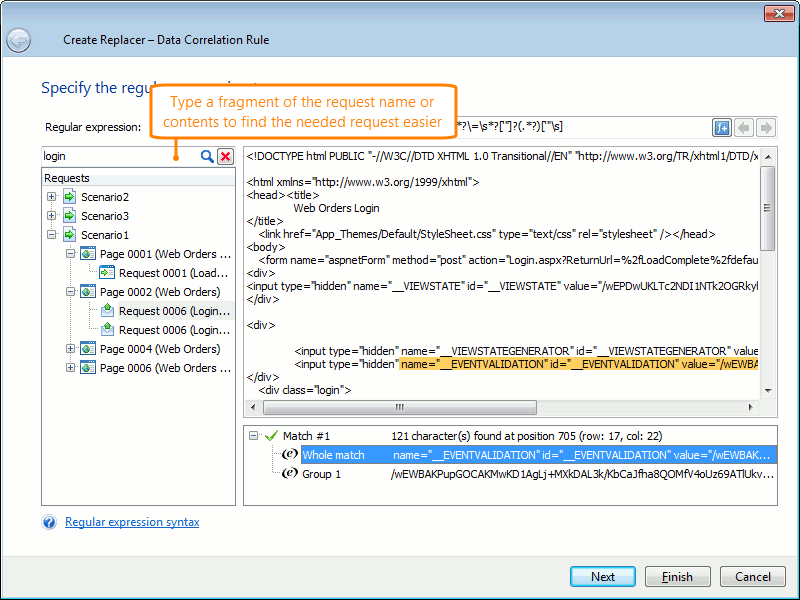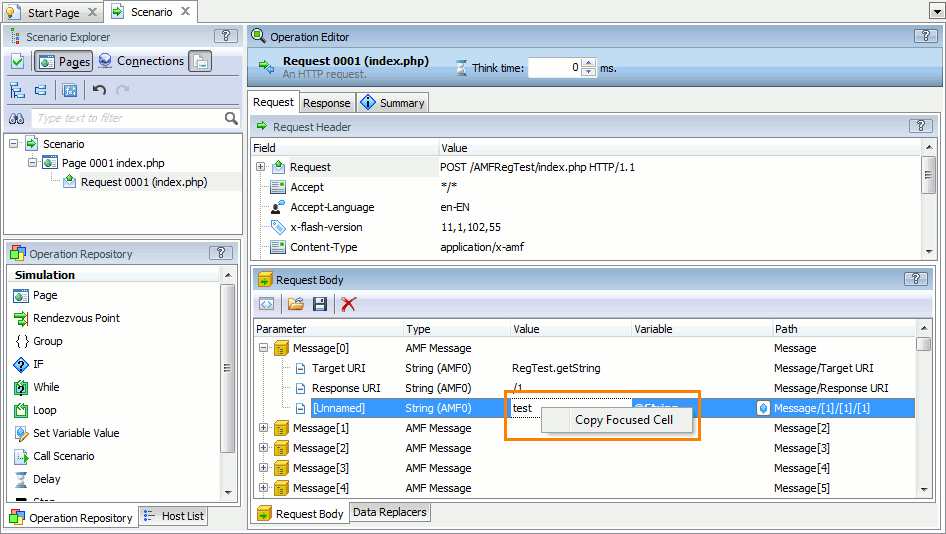This topic describes the changes made to LoadComplete 4.60. For information on the changes made to other versions of the product, see Version History.
Performance Improvements
-
Faster and more reliable traffic simulation. Version 4.60 includes improved simulation algorithms that have dramatically streamlined LoadComplete performance during the playback and have made the simulation more reliable:
-
Small load tests (that simulate 50 virtual users or so) do not load the CPU much.
-
Large load tests (500+ virtual users) now simulate more requests per second.
-
The new algorithms eliminates unexpected long gaps between simulated requests. In scenarios with multiple connections, such gaps could cause the connections to close due to a timeout.
To benefit from LoadComplete performance improvements, we recommend that you run your load tests on computers with the appropriate computing capacity. To learn more, see LoadComplete System Requirements and Remote Agent System Requirements. Note that the recommended system requirements changed (see below).
-
-
64-bit Agent. The LoadComplete and Remote Agent installation packages now include a 64-bit version of LoadComplete Remote Agent (RAS.exe). On 64-bit systems, this version works faster than the 32-bit version. When you install LoadComplete or LoadComplete Remote Agent, the installation program determines the version of your operating system and installs the appropriate version of RAS.exe automatically.
Due to the improved simulation algorithms, the performance of 32-bit Agents has also been increased. -
In distributed and cloud tests, LoadComplete can now copy large test logs from remote load stations much faster.
Support for Oracle Database Counters
Now you can connect to and monitor the performance of Oracle databases during the test run. For complete information, see Oracle Database Performance Counters.
Cloud Testing Enhancements
-
Running load tests in Virtual Private Cloud subnets. You can configure LoadComplete to access Amazon cloud computers by using their private IP addresses, rather than their public IP addresses. This may be helpful, for example, if you want to run load tests in a Virtual Private Cloud subnet that does not provide public IP addresses for instances.
-
More VUs per cloud machine. You can now simulate up to 2000 virtual users on each cloud computer. Earlier, the number was 400.
-
A new option for controlling the number of VUs. Amazon Machine images in your project have the new Max VU number setting. It helps you set the maximum number of virtual users that can be simulated on cloud machines (up to 2000). Formerly, the maximum number of virtual users was hard-coded. When you run load tests, LoadComplete uses this value to calculate the number of instances to launch from the machine image. See About Load Testing on Cloud Computers.
Data Correlation Enhancements
-
Smarter data correlation:
-
When detecting correlation dependencies between requests and responses, LoadComplete now takes into account their actual order in the scenario.
-
When you clear think time values in the recorded scenario, LoadComplete no longer loses established dependencies between requests and responses and will simulate them correctly.
-
-
Quick Search for requests and responses. When specifying regular expressions for custom correlation rules in the Recording > Data Correlation dialog, you can use the Quick Search box to filter the list of requests and responses. Use it to find the existing request or response you want to use to create a correlation rule faster.
Overall Improvements
-
Support for Windows Server 2016. Now you can record and run load tests on this operating system.
-
More convenient work with data sources. If your test includes variables that get their values from a database or file, and you simulate traffic on remote or cloud stations, you no longer need to configure your stations to access your database or file. You only need to have access to the database or file on the computer from which you will control the test run. LoadComplete will get all the needed values and send them to your stations along with other test data when you start the test run.
-
Faster scenario verification. Now you may command LoadComplete to ignore page think times for scenario verification. This makes the verification faster, but less realistic in certain cases. See Selecting Verification Settings.
-
Improved support for CORS requests. You can simulate Cross-Origin Resource Sharing (СORS) requests with cookies correctly.
-
Better support for Rich Web Applications. You can copy individual values from Rich Internet Application requests and responses. To do this, use the Copy Focused Cell command of the new context menu in the Request Body or Response Body panel:
-
A number of bugs reported by our customers have been fixed.
Changes in LoadComplete System Requirements
-
The minimum amount of RAM that LoadComplete and LoadComplete Remote Agent now require is 4 GB.
-
We recommend that you install LoadComplete and LoadComplete Remote Agent on a computer with an Intel Core i7 processor that has 4 or more cores.
Discontinued Support
The non-proxy recording mode has been removed from LoadComplete. Now, LoadComplete records traffic only in the proxy mode. That is, during recording, LoadComplete acts as a proxy between your system and your tested web server. For more information on how recording works in LoadComplete, see About Scenario Recording.

 Support for Oracle Database Counters
Support for Oracle Database Counters
